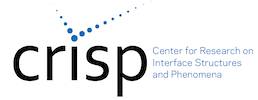Our kits are currently being reviewed and updated by a team of collaborative, innovative and interdisciplinary educators who wish to enhance the educational opportunities for students. These dedicated teachers are members of CRISP Collaborative Science for All (CCSA) as well as local educators.
Click to see the SCSU CRISP Module Template used by CCSA for improving and updating the CRISP demos and kits. Each kit page offers a CRISP developed teacher module and CRISP aligned standards (both NGSS and CCSS)
Kit Request form

Hydrophobic sand, also known as nanosand, is an example of science on the nanoscale. Treatment of the surface of individual grains of sand with a hydrophobic monolayer results in a new type of sand that behaves very differently from regular beach sand. In this activity, visitors are invited to examine the differences between nanosand and regular sand by exposing both to water. The nanoscale treatment of nanosand that results in its unexpected behavior is demonstrated with a magnetic model, and potential applications of nanosand are discussed.
Adapted from NanoDays Toolkits originally created for NISEnet via the NanoDays project
This material is based upon work supported by the National Science Foundation Award Numbers 0532536 and 0940143. Any opinions, findings, and conclusions expressed in this material are those of the authors and do not necessarily reflect the views of the National Science Foundation.
Subject(s):
Hydrophobia, properties of materials, size
Objectives:
Students will understand:
- The way a material behaves on the macroscale is affected by its structure on the nanoscale.
- Hydrophobic sand is coated with a nanometer-thick layer of a silicon compound, which makes it repel water.
Materials in this kit:
- Ordinary, colored sand (green, or another color)
- Hydrophobic sand (purple, or another color)
- Trays
- Dropper bottles
- Small portion cups
- Drinking cups
- Spoons
- “Nano Sand” sheet
Safety:
Do not ingest the sand
Additional Resources:
Nano Sand teacher module
Nano Sand CRISP aligned standards
Nanosand Guide from NanoDays
STEM Careers:
Environmental Technician
Manufacturing Technician
Materials Scientist
Researcher
Conservation Scientists
Environmental Scientists
Health and Safety Engineers
Industrial Engineering Technicians
Industrial Engineering Technologist
Materials Engineers
Standards:
PS1 - Matter and Its Interactions
EST1- Engineering Design
Concept 2 - Cause and effect. Mechanism and explanation.
Concept 6 - Structure and function.
Practice 3 - Planning and Carrying Out investigations
Practice 4 - Analyzing and Interpreting Data
Practice 8 - Obtaining, evaluating, and communicating information
